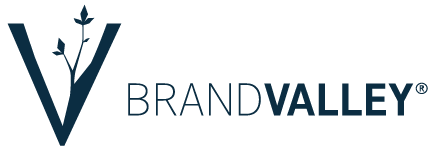CLIENT/BRAND
Arcus Norway AS, Hagan – Løiten
TYPE OF PROCESS
– Design research
– Semiotic analysis
– Consumer insights
– Design and brand guidelines
INTERVIEWS
12
OUTCOME
– Brand personality
– Two new products
“Brand Valley has conducted a comprehensive and valuable study for us. They are professionally competent, thorough and flexible, and show great understanding for their client’s need. We have had broad use for the insight Brand Valley’s study provided.”
Figure 1: Old and new Løitens Export Aquavit
Defining the identity of a heritage brand
Client
Arcus Norway AS is Norway’s largest wholesaler of wine and liquor and they own several brands in the aquavit category. The Løiten brand is a market leader and an iconic Norwegian brand, with a history back to 1855.
Ambition
Redesigning an iconic brand to strengthen the position in the market
Context
The aquavit category has been under major transformation. From being a category of very few products, the category now holds over 200 different products. Norwegians have an interest in aquavit both as a product and as a cultural indicator, as this is a product that has a recorded Norwegian heritage since 1531. For Arcus, the increased competition and increased interest in aquavit as a product category, meant major opportunities, but at the same time also a challenge.
At the same time, such a long history has meant an organic development of the portfolio and several changes of the design label. The designs were from different time epochs, with some labels appearing as outdated, and with little coherence across the different products in the Løiten portfolio. At the same time, the Løiten products could not change appearance in a way that risked that the consumers did not recognise the products on the shelf. Part of the complexity is that Norway regulates the alcohol category highly restrictively, limiting label design, removing the possibility for advertisements and limiting non-advertising mentioning of the products.
There was a need for a more holistic look at the brand and the product portfolio. Arcus needed to consider current associations with the brand and potential new associations. What should the Løiten brand represent. Arcus had often used a quantitative study, but with this project there was a need to look at the brand more holistically, leading to a qualitative study.
Figure 2: Brand Valleys model for semiotic analysis
Approach
Brand Valley does design research, and for this study we did a semiotic analysis of the brand, the product and the label, in order to unpack all of the meanings. Our methodical framework is inspired by Charles Pierce’s triadic model which see a “sign” consisting of three parts. This we translated into a brand related model to work in our context (figure 2). The “sign” as we see it: the intended meaning to be communicated, the design references (shape, silhouette, colours etc.) that are chosen to communicate this and how different actors interpreted the references. Both the product category, the brand, the product, the bottle and the label with all their sub-elements, were analysed as separate elements (“signs”). We looked at these elements separately, but also studied how they worked together as the sign in this context becomes the sum of all the parts (figure 3).
The most fun working with this project is that the Løiten brand has such a significant heritage. To understand the intended meaning, it is not enough to understand what it represents today, we also had to go into both the University of Oslo Library and the National Archives to trace back what the elements in the labels had meant. One of the findings was that some elements had got lost in the translations into the label over time. A particular finding was that a drinking horn turned out to be the original trademark of the brand, but that it had lost significance in redesigns over a century and a half (figure 4).
Figure 3: Decomposition to address coherence
Figure 4: Drinking horn, Løiten Trademark
Figure 5: Løiten product portfolio (Design Olssøn Barbieri AS)
Figure 6 Løiten tur - a spin-off (design Grid Design)
Outcome
The end-result of the project was an extensive report of all of the insights gathered in the project along, with design guidelines for the work ahead. This was used for a new design for the Løiten product portfolio and a positioning platform for the Løiten brand. From this work Arcus has got an understanding of what the Løiten brand could be, and what it should stand for.
By understanding the essence of the brand along with the consumer insights on user scenarios gained in the project, the project manager got a very good understanding of which other products could be launched under the Løiten brand name.
A direct spin-off from the project was therefore the new Løiten Tur aquavit (figure 6). This aquavit represented something new in the category and has been a very successful launch. In addition, the insights from the study and guidelines were also indirectly used to launch yet another product: a limited edition of Løiten for Christmas.
We wish to thank our client, Arcus, for an exciting project!
Other projects for this client:
Semiotic analysis and brand positioning Braastad (cognac)
Semiotic analysis and brand positioning Gammel Opland (aquavit)
Norwegian culture and aquavit









